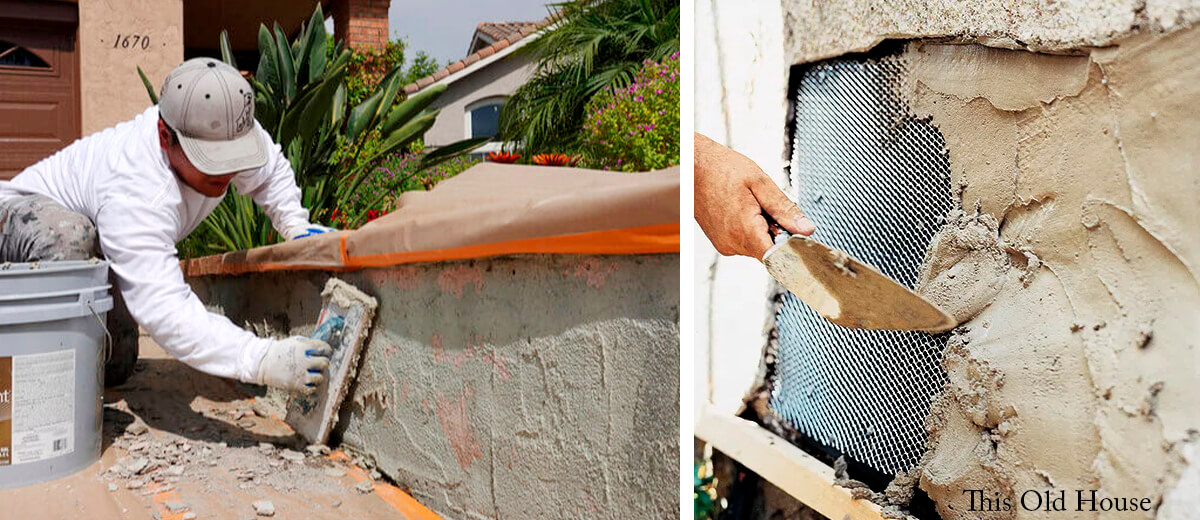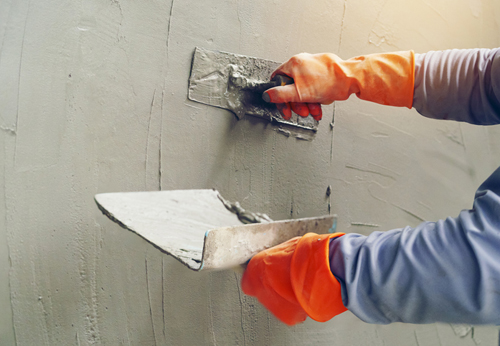The Ultimate Guide to Selecting a Competent Stucco Contractor for Your Requirements
The Ultimate Guide to Selecting a Competent Stucco Contractor for Your Requirements
Blog Article
Exploring the Versatility of Stucco in Modern Architecture
Stucco has actually long been recognized for its aesthetic allure and adaptability, yet its duty in contemporary style warrants a better examination. By discovering its ingenious applications, from striking facades to energy-efficient styles, one can appreciate just how stucco is redefining the limits of architectural expression.
Historic Relevance of Stucco
The historic importance of stucco is extensive, as it has actually played a critical role in building practices throughout numerous cultures for centuries. Coming from in old civilizations, stucco was used by the Egyptians and Greeks as a long lasting and functional finish for both exterior and interior surface areas. Its flexibility to various climates and capability to mimic much more pricey materials made it a favored selection.
In the Roman age, stucco became a main ornamental component, used extensively in public buildings, villas, and holy places. The Romans improved the application methods, permitting complex designs and alleviation sculptures. Throughout the Renaissance, stucco experienced a resurgence, especially in Italy, where it was used in elaborate facades and ornamental details, showcasing the creativity of the duration.

Modern Applications in Layout
Stucco has located renewed importance in modern design due to its adaptability and aesthetic charm (stucco contractor). This typical material is significantly utilized in contemporary style, linking the gap in between modern and classic aesthetic appeals. Designers and architects appreciate stucco for its versatility, permitting it to be used in various styles-- from minimalist structures to clarify Mediterranean styles
In household tasks, stucco uses a tidy, smooth coating that enhances the visual cohesion of exteriors. Its ability to adhere to different shapes and surfaces makes it a suitable selection for both brand-new constructions and renovation projects. Additionally, stucco's resilience and low maintenance demands add to its expanding appeal in city setups, where durable products are essential.
Commercial applications have also accepted stucco, with lots of businesses selecting this product to create welcoming and distinct storefronts. Making use of stucco in public structures, such as schools and recreation center, showcases its possibility for creating aesthetically appealing atmospheres while supplying superb insulation residential properties.
Shade and Appearance Advancements
Checking out color and texture technologies in stucco has opened brand-new avenues for designers and designers, enhancing the material's visual effect in modern construction. Current improvements in pigment technology have actually enabled a wider range of colors, making it possible for designers to develop striking facades that incorporate effortlessly with their surroundings or stick out as bold building statements. This adaptability in color option provides engineers the capability to stimulate certain psychological actions and harmonize with regional aesthetic appeals.
Texture technologies have likewise transformed stucco applications. Methods such as shoveling, spraying, and stamping have actually led to diverse surface area coatings, ranging from smooth and improved to tactile and sturdy. These variants not only add to the structure's character but additionally play an important duty in light interaction, improving the visual deepness and dimensionality of surface areas.
Additionally, the intro of artificial stucco options has actually broadened layout opportunities, supplying enhanced sturdiness and weather resistance while preserving aesthetic appeal. As engineers remain to explore cutting-edge shade schemes and textured surfaces, stucco continues to be a critical element in modern-day style, showcasing the product's adaptability and timeless relevance in contemporary design.
Sustainability and Energy Efficiency
Developments in color and structure have not only improved the aesthetic appeal of stucco but also paved the way for greater concentrate on sustainability and power performance in modern-day style. As ecological worries end up being progressively famous, the building and construction market is turning its interest to materials that contribute favorably to eco-friendly equilibrium.
Stucco, composed mainly of natural materials such as lime, sand, and concrete, uses a lasting option to even more resource-intensive building products. Its long life and longevity reduce the need for regular replacements, thus minimizing waste and source intake gradually. Modern stucco formulas frequently consist of energy-efficient additives that improve insulation homes, decreasing home heating and cooling prices for buildings.
The reflective top qualities of stucco can likewise be crafted to reduce warmth absorption, adding to cooler interior environments and much less reliance on man-made environment control systems. By promoting power preservation and decreasing the carbon impact of structures, stucco more info here lines up with the concepts of sustainable style. As contractors and engineers embrace eco-friendly practices and ingenious strategies, stucco stands apart as a responsible and versatile option in modern layout.

Case Studies of Stucco Projects
The versatility of stucco as a structure product is exemplified in numerous effective architectural tasks that highlight its useful and visual benefits. One notable instance is the improvement of the historic Casa de la Guerra in Santa Barbara, California. Making use of stucco not just preserved the structure's Spanish Colonial Rebirth style but additionally improved its longevity and weather condition resistance, ensuring long life while preserving building integrity.
An additional engaging situation is the contemporary property task, the Cactus House in Scottsdale, Arizona. stucco contractor. This striking home attributes a smooth stucco finish that integrates with the surrounding desert landscape. The stucco's light shade mirrors warm, adding to energy performance, while the textured surfaces include aesthetic interest
Additionally, the Kings Cross redevelopment in London showcases the versatility of stucco in city settings. The application of stucco on modern-day mixed-use structures creates a natural aesthetic that respects historical context while accepting modern design principles.
These case studies demonstrate exactly how stucco can Extra resources offer numerous building functions, from conservation and power efficiency to visual improvement, making it a flexible selection try these out in contemporary architecture.
Verdict
 In conclusion, stucco's historical value and contemporary adaptability make it a useful material in modern style. As shown through numerous instance studies, stucco continues to play a critical role in shaping the architectural landscape of the modern era.
In conclusion, stucco's historical value and contemporary adaptability make it a useful material in modern style. As shown through numerous instance studies, stucco continues to play a critical role in shaping the architectural landscape of the modern era.
In conclusion, stucco's historic relevance and contemporary adaptability make it a useful product in contemporary design.
Report this page